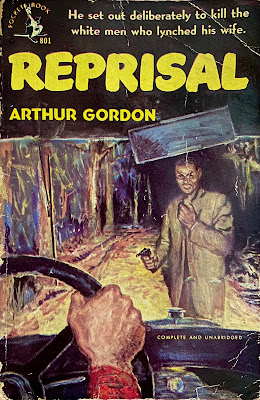This 225-page New English Library paperback introduces readers to Alan Paine, a married man with a young son and daughter. Living in West of England, Paine's father was British and his mother American. Serving the British military, Paine became an expert marksman and explosives specialist. After serving in the Vietnam War, Paine retired to a paper-pushing clerk working for the county on the nine-to-five grind.
As the book begins, Paine's daughter is walking through the forest on the way home. She's attacked by three men, raped, and then shot. When Paine's wife and son go searching for her they stumble on the same three men and are rewarded with fatal shots to the head.
In the following chapters readers learn that nearly two years has passed and Paine is now working under the alias Max Case as an explosives expert and assassin for the Irish Republican Army (IRA). By working within the IRA ranks he secretly creates “accidents” that kill his fellow soldiers. However, Paine's vengeance isn't strictly reserved for the IRA. He also uses his deadly role as a way to kill the opposing Protestants that vow to keep northern Ireland within British reign. Paine doesn't care who he murders because he feels that the whole bloody war led to his family's death.
Other than Paine, the other main character in the book is a woman named Siobahn. She's working for the Protestants as a double agent in the IRA. Her leadership leads to many IRA soldiers perishing under “mistakes”. Paine meets Siobahn and the two develop a romantic involvement. The book's finale involves Paine being ordered to break out the three IRA men that killed his family.
Forgive the Executioner is an unusual novel. At times it works like an effectively tight counter-terrorism novel with Paine planning and performing hits on an assortment of mid-tier terrorists. These scenes are presented well and deliver just enough violence to satisfy any vigilante-fiction reader. However, the book becomes so silly in parts that I often contemplated if Lane was writing satire.
Several times in the book Case changes his look by simply cutting and dying his hair blonde and shaving. This miracle makeover gives him the ability to weave in and out of close compatriots as a different person. Often he fools people he has closely worked with in the past, including Siobahn, who he fools into believing he's two different people. It is this sort of nonsense that makes it unbearable to even suspend disbelief for enjoyment's sake. I get the 'ole face switcharoo bit from the pulp era, but this is 1978.
My other issue is the over-the-top graphic sex. This book reads like a porn novel with Case plowing through pus...women...on nearly every other page. I get the hyperbolic sex scenes, but the women he's with nearly gasp themselves to death when he whips the manhood.
My guess is if you enjoy workaday action-adventure paperbacks then Forgive the Executioner shouldn't be a far cry from plain 'ole titles like The Butcher and Nick Carter: Killmaster. Tepid recommendation, but good luck finding a copy.






















